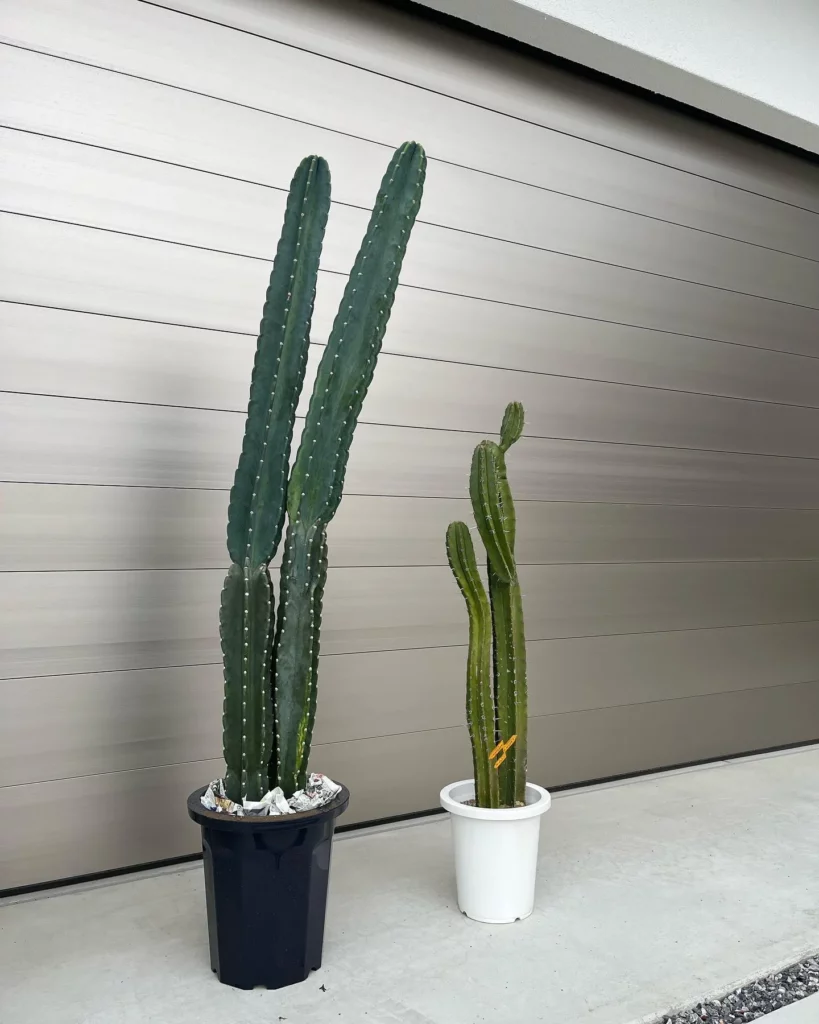Hi there! If you’re looking for tips on how to care for your desert agave plant, you’ve come to the right place. In this care guide, I’ll walk you through everything you need to know to keep your desert agave healthy and thriving.
Key Takeaways:
- Desert agave plants are succulents that prefer rocky, sandy, well-drained soil and full sun.
- They have thick, pointy leaves and can grow up to 10 feet in height and width.
- These plants do not require fertilizer and should not be encouraged to bloom, as they only bloom once and then die.
- Water your desert agave only when the soil is dry, and be cautious of overwatering to avoid root rot.
- Propagation can be done through offsets or pups that grow around the base of the parent plant.
Appearance of Desert Agave
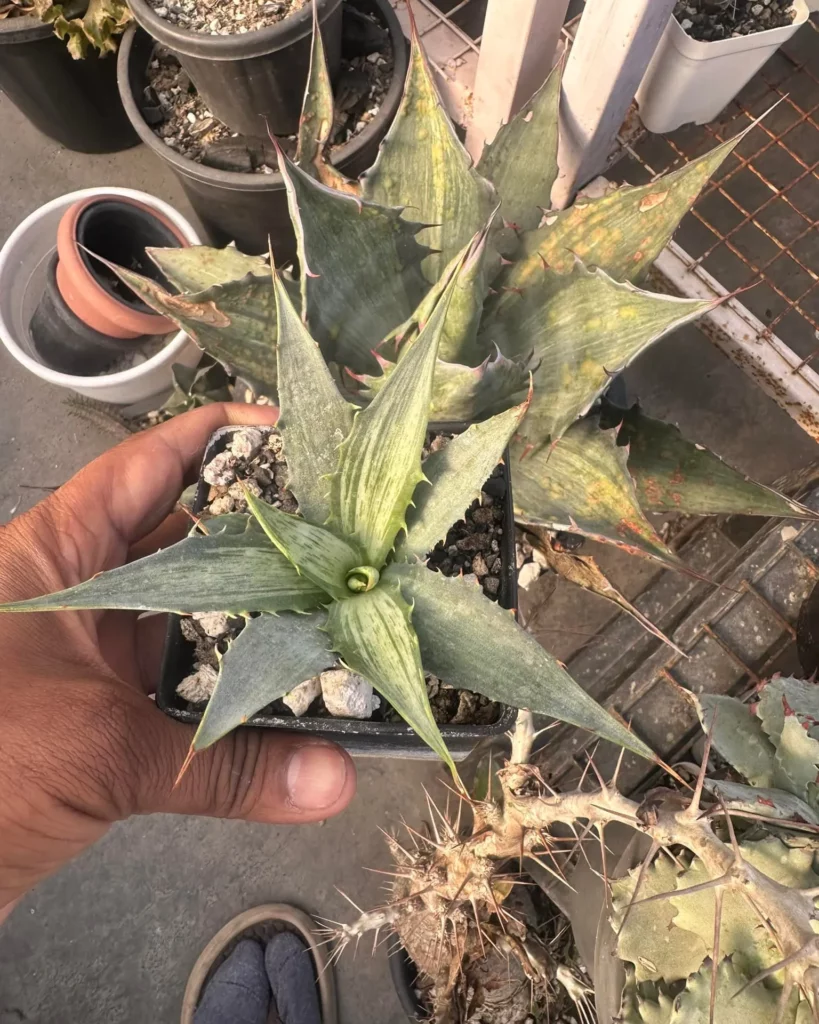
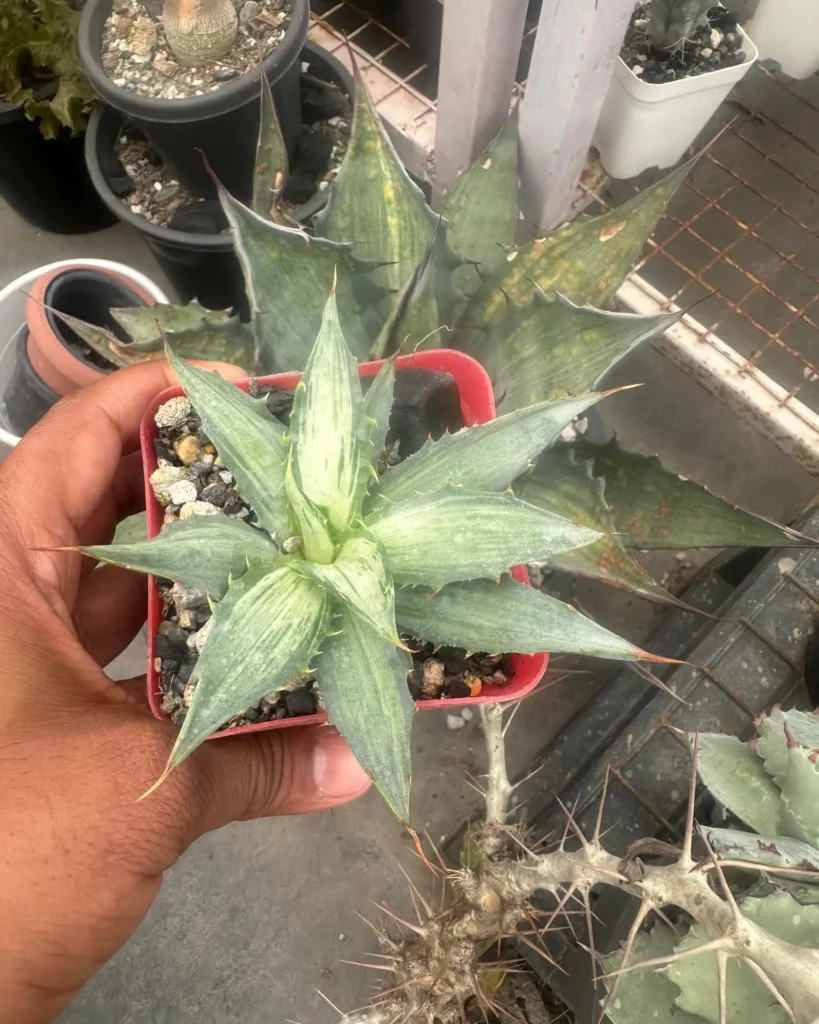
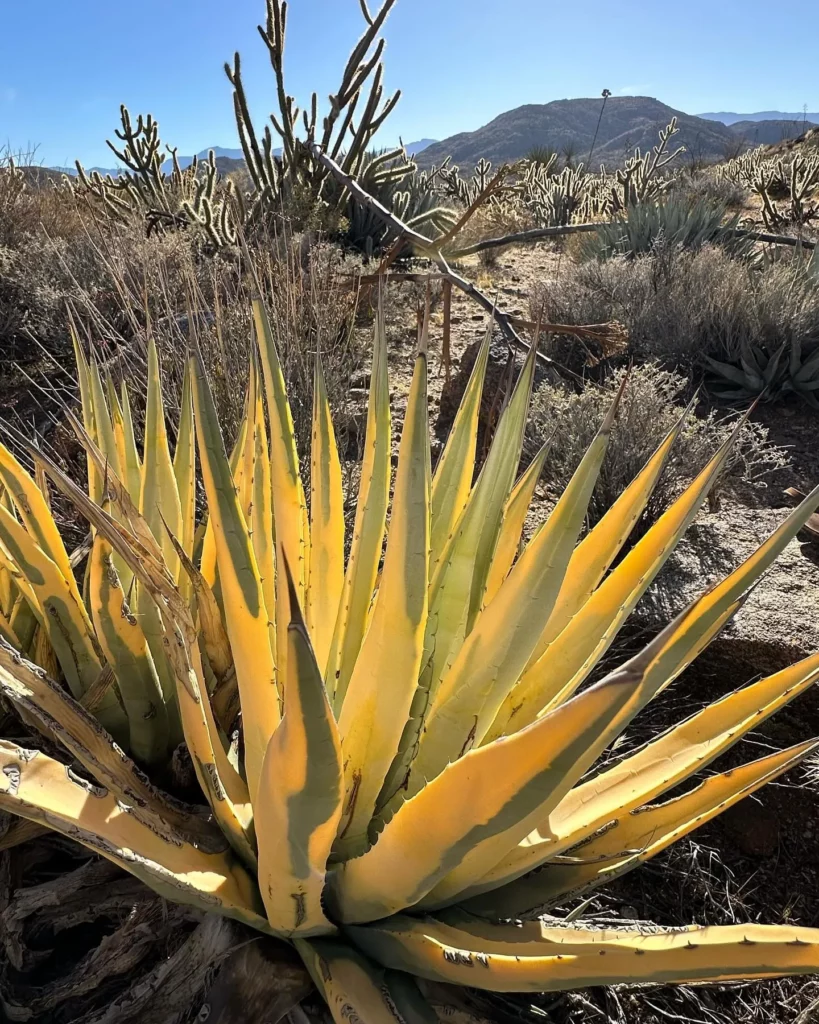
When it comes to the appearance of desert agave plants, there are several distinctive features that make them stand out. These succulents have thick leaves that end in sharp points, giving them a unique and striking look. The leaves can range in color from grayish-blue to green, with some varieties developing a noticeable band in the center, adding to their visual appeal.
Desert agave plants typically form rosettes, with the size of the leaves ranging from 6 to 15 inches long and 2 to 3 inches wide. Their compact and symmetrical growth habit makes them an attractive addition to gardens and landscapes. Additionally, as the plants mature over time, they produce offsets that can be separated and replanted to create new plants.
One of the most captivating aspects of desert agave is their blooming period. After 10 to 20 years, these plants develop a tall flower stalk that can reach impressive heights. The stalk is adorned with bright yellow, funnel-shaped blossoms, creating a stunning visual display. It’s important to note that agave plants only bloom once in their lifetime, and after flowering, the main plant dies. However, the offsets it has produced will continue the growth cycle, carrying on the legacy of these remarkable succulents.
Light Requirements for Desert Agave
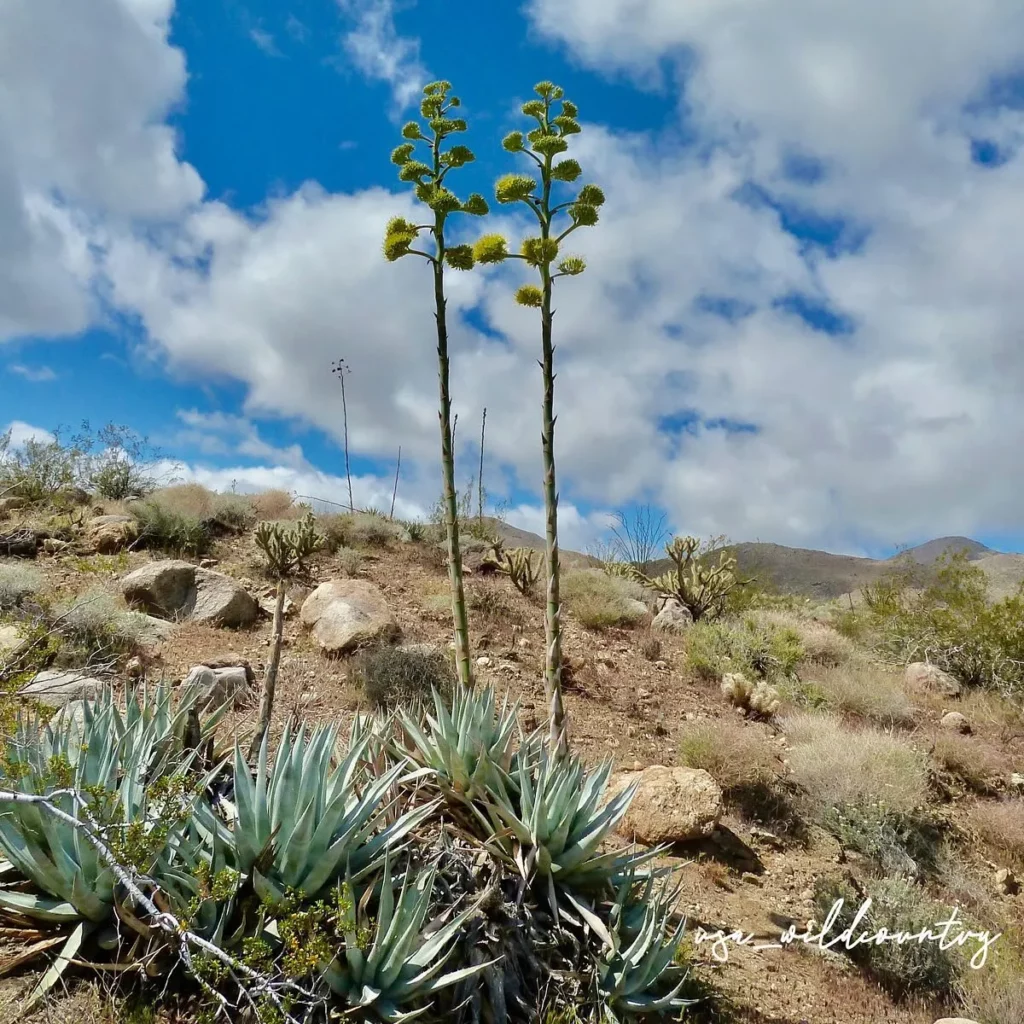
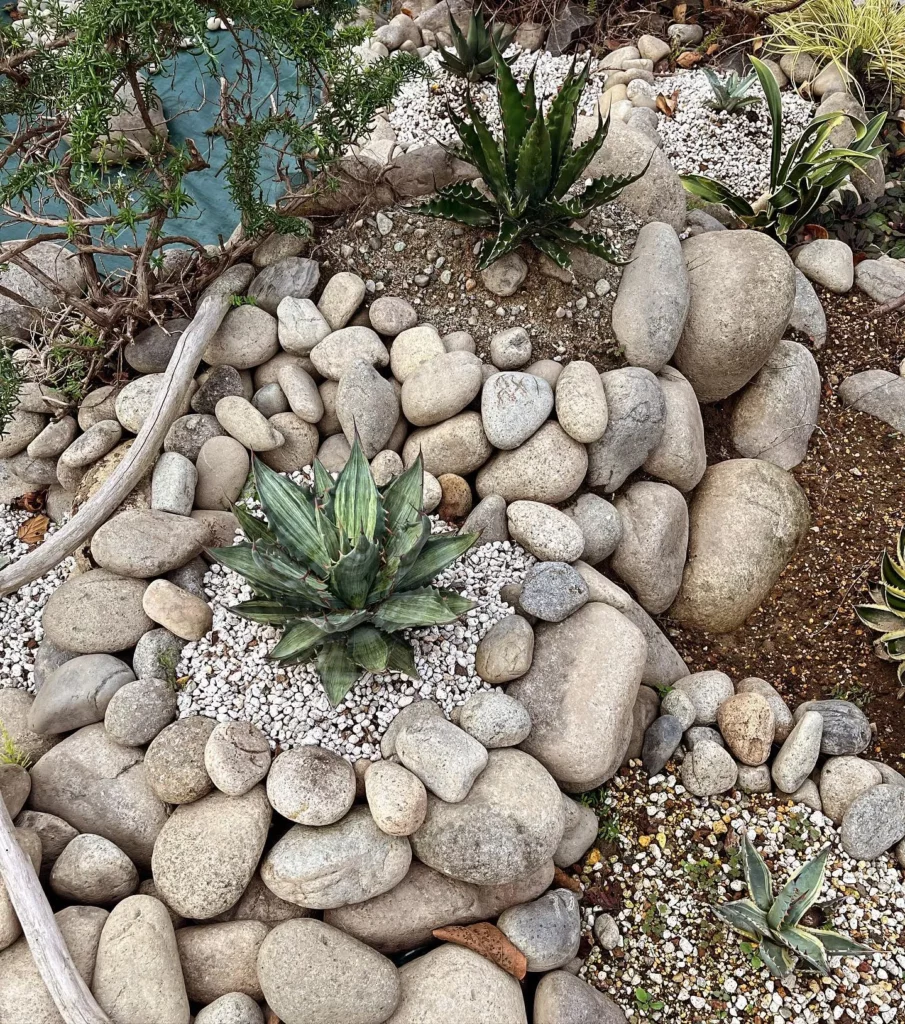

When it comes to providing the right light conditions for your desert agave, it’s important to understand their specific needs. Desert agave plants thrive in full sun exposure, which means they require at least six hours of direct sunlight each day. This allows them to photosynthesize and grow to their full potential. However, they can also tolerate some shade, particularly in hotter climates where excessive heat can be detrimental.
It’s worth noting that while desert agaves love sunlight, they do not thrive in high humidity. These plants are adapted to arid desert environments, where humidity levels are typically low. Exposing them to high levels of humidity can lead to various issues such as rot and fungal diseases. Therefore, it’s crucial to provide them with well-drained soil and avoid overwatering to maintain a dry and arid environment.
Here are some tips for providing the right light conditions:
- Place your desert agave in a location that receives ample sunlight, such as a south-facing window or a spot in your garden with full sun exposure.
- Ensure that the surrounding area is free from any obstructions that may cast shade on the plant, such as trees or buildings.
- If you live in an area with extremely high temperatures, providing some shade during the hottest part of the day can help prevent heat stress.
- Monitor humidity levels and adjust watering accordingly to maintain a dry environment.
Watering Desert Agave
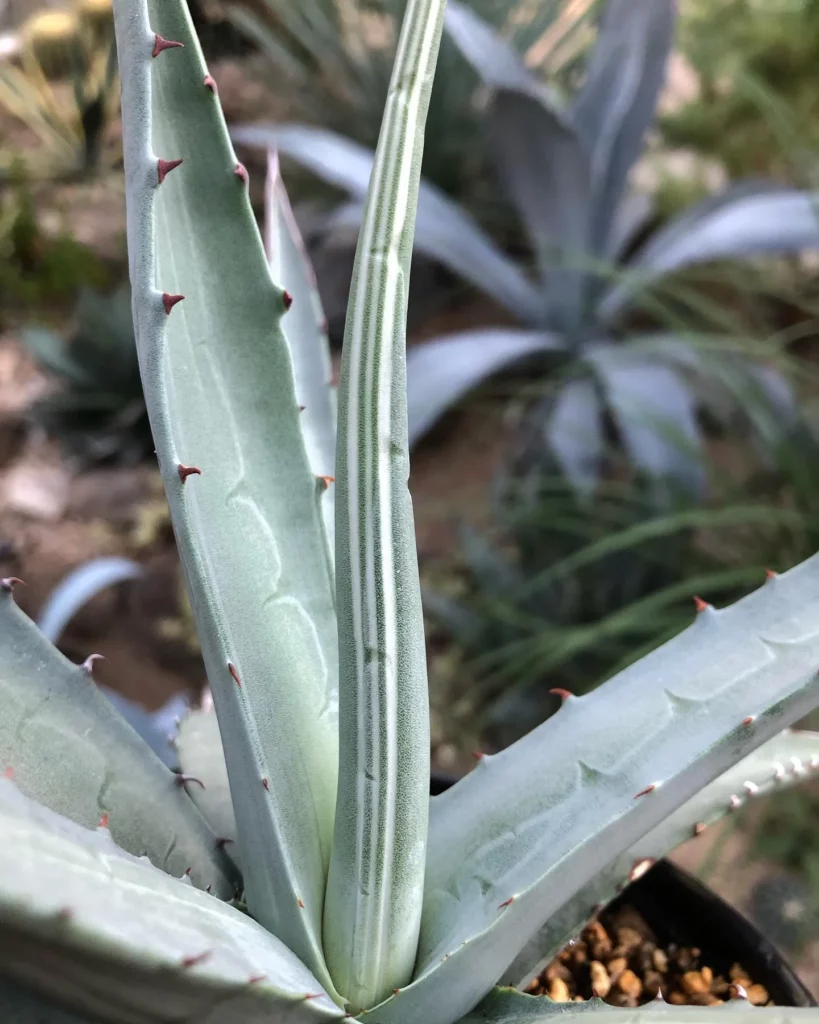
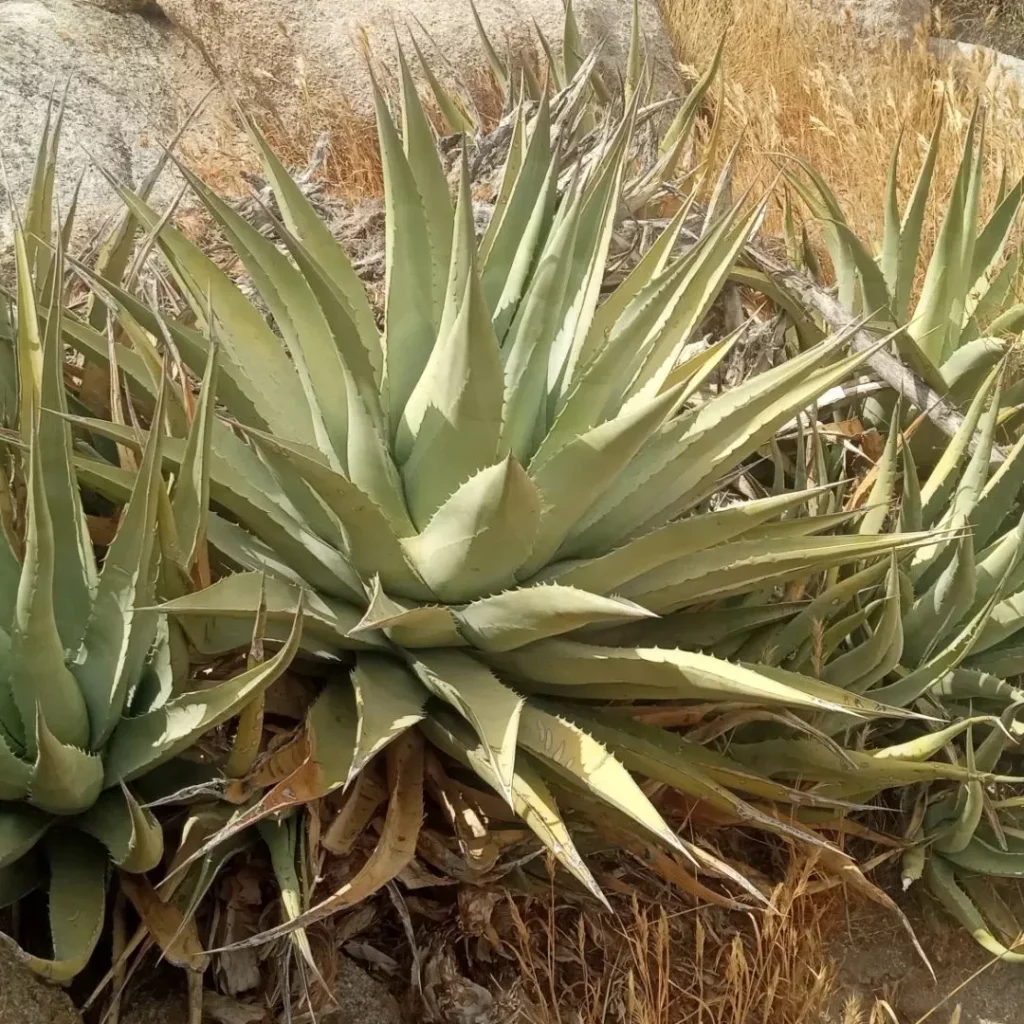
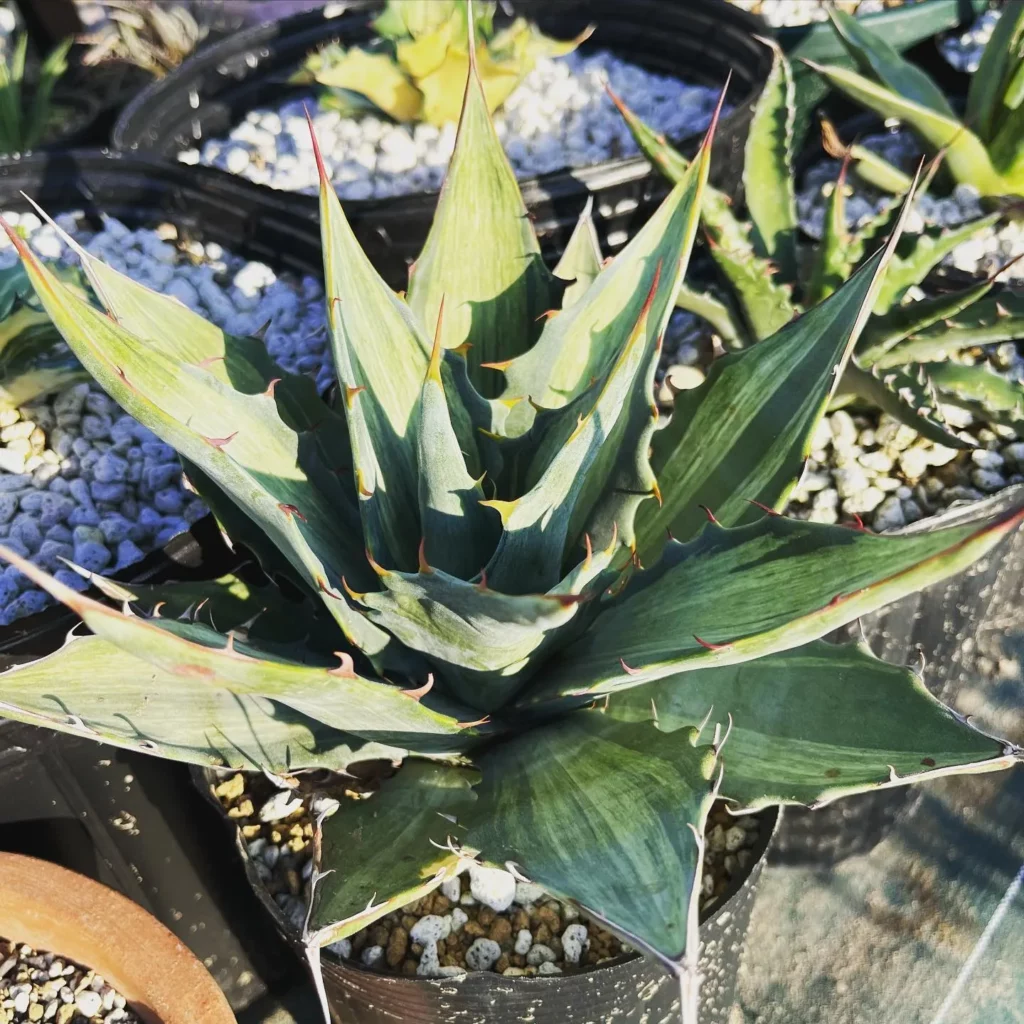
Proper watering is crucial for the health and well-being of your desert agave. These plants have adapted to arid conditions and are highly drought-tolerant, so it’s important not to overwater them. Here are some essential guidelines to follow when watering your desert agave:
- Water your desert agave only when the soil is dry. Stick your finger about 2 inches into the soil. If it feels dry at that depth, it’s time to water.
- During the establishment phase, which is the first month after planting or repotting, water your agave every four to five days. This helps the plant develop a strong root system.
- After the establishment phase, water your desert agave once a week. Adjust the frequency based on rainfall and the moisture level of the soil.
- Gradually decrease watering during periods of low rainfall. Once the plant is established, you may only need to water every other week or even less frequently, depending on the climate.
- Avoid overwatering your agave, as this can lead to root rot and other problems. Always ensure the soil has proper drainage to prevent waterlogged conditions.
Symptoms of Overwatering and Underwatering
It’s important to recognize the signs of overwatering and underwatering to adjust your watering routine accordingly. Overwatered agave plants may develop yellow leaves, mushy stems, or a foul smell. Underwatered agave plants, on the other hand, may have shriveled or brown leaves. By observing these symptoms, you can make appropriate changes to keep your desert agave healthy and thriving.
Fertilizing Desert Agave
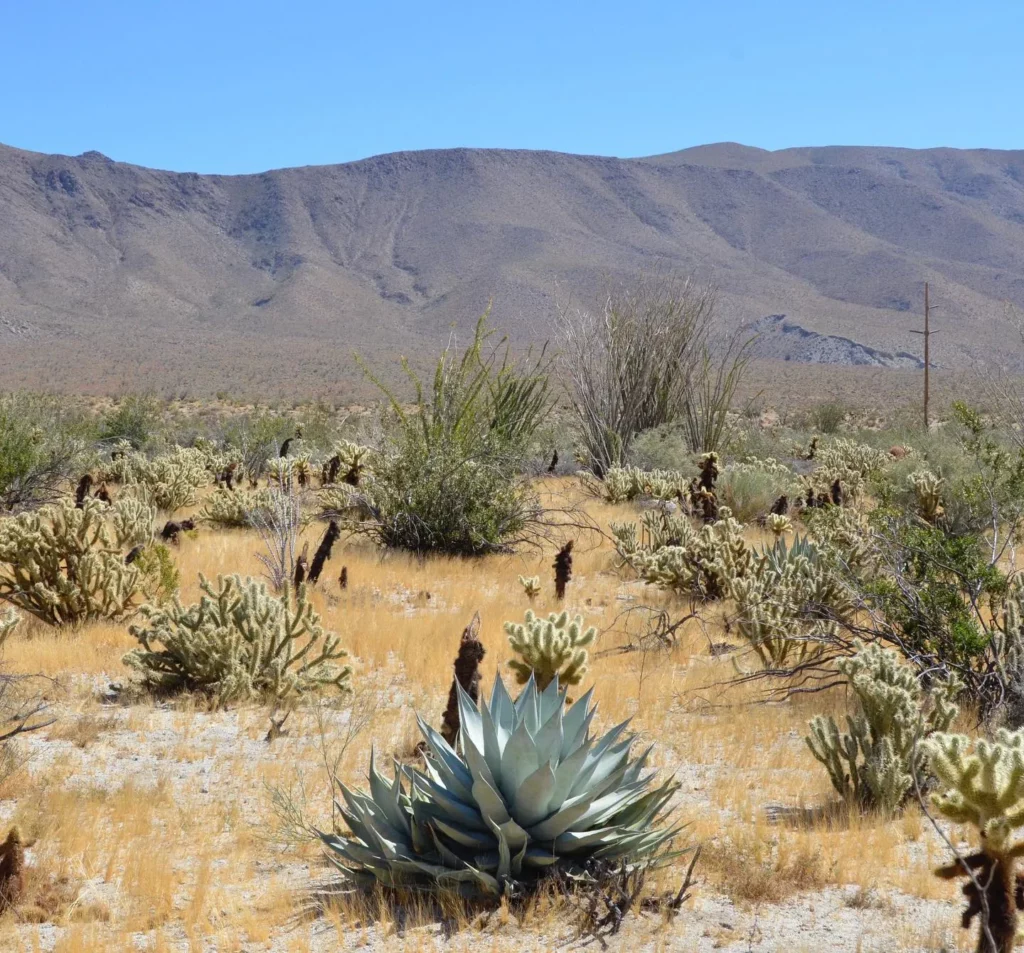
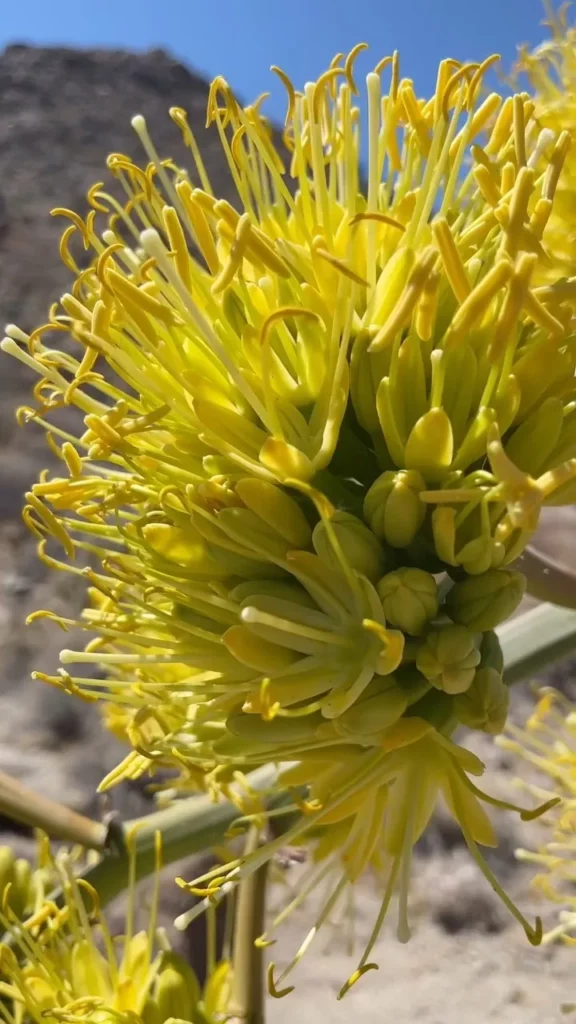
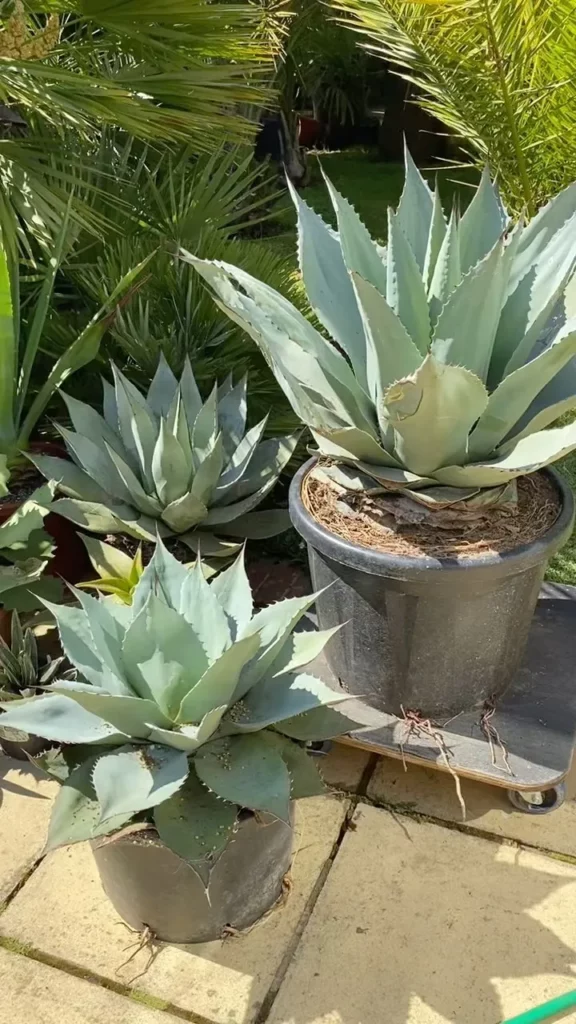
When it comes to fertilizing desert agave plants, less is definitely more. These hardy succulents are adapted to thrive in nutrient-poor soil, making them low-maintenance and easy to care for. In fact, fertilizing desert agave plants is not necessary and can even have adverse effects on their growth and health.
Agave plants are adapted to survive in arid desert conditions, where they have evolved to extract nutrients from the minimal resources available. Adding fertilizer to the soil can disrupt this delicate balance and lead to excessive growth, weak stems, and an overall decline in plant health. It’s best to avoid fertilizing desert agave altogether and let them grow naturally.
If you’re concerned about the health and vigor of your desert agave plant, there are alternative ways to promote its well-being. Ensuring the plant receives adequate sunlight, providing proper watering, and maintaining well-drained soil are key factors in supporting the plant’s natural growth and development. Remember, desert agave plants are resilient and have adapted to survive in challenging conditions without the need for additional nutrients.
Potting Desert Agave
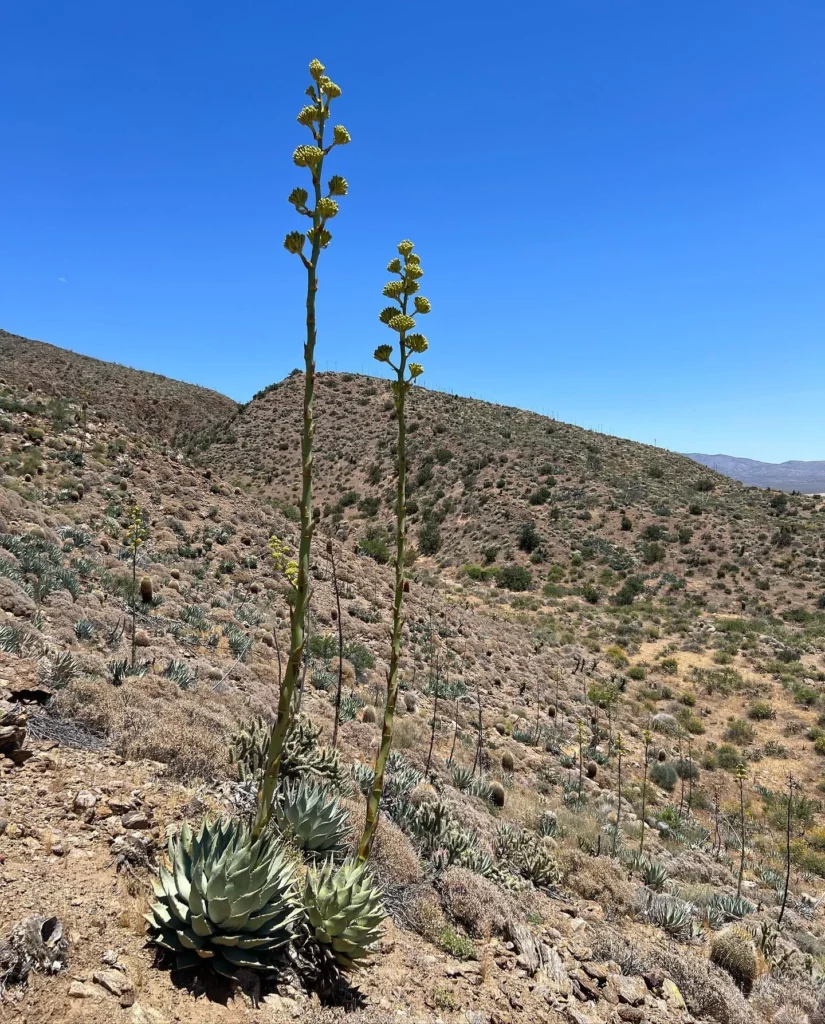
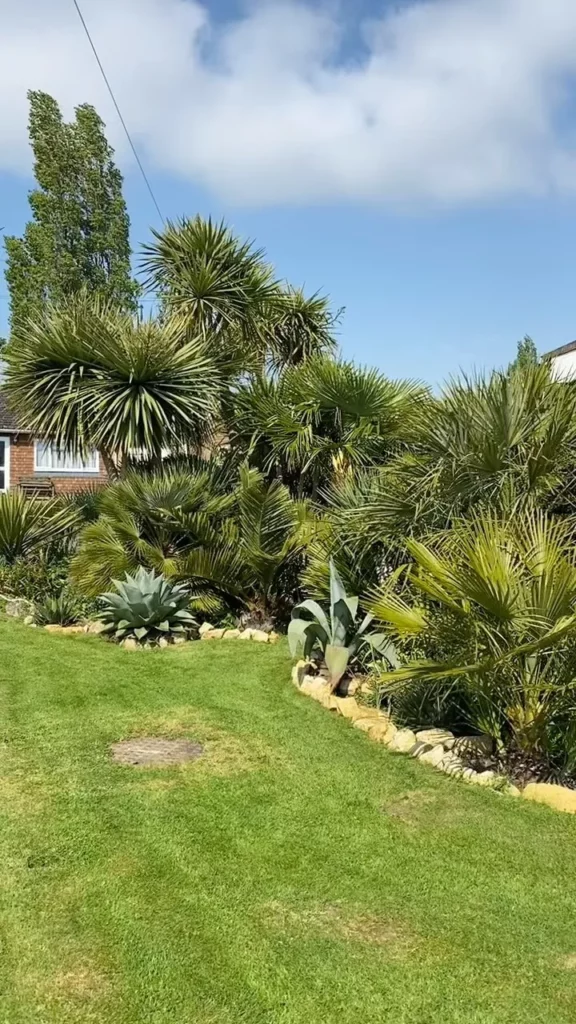
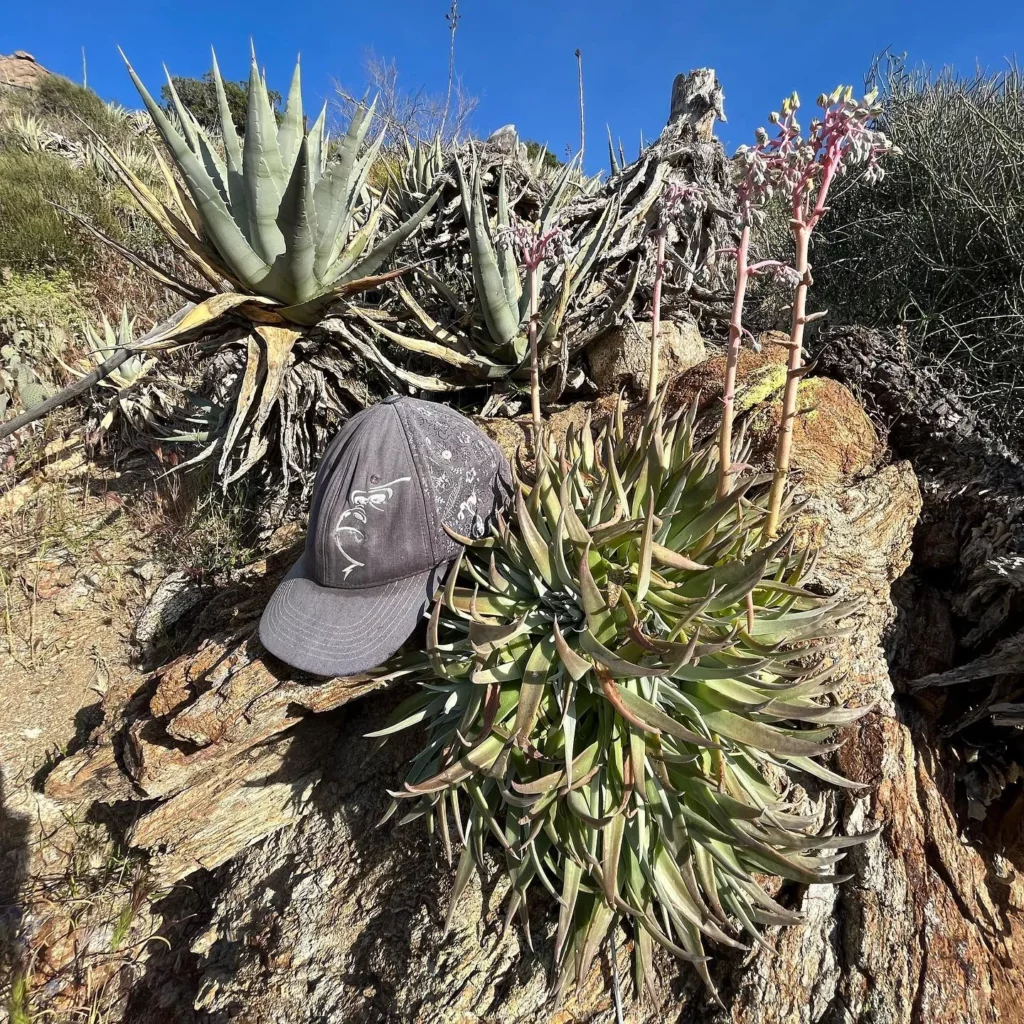
When it comes to potting desert agave plants, it’s important to select the right container and soil to ensure their successful growth. Here are some tips to help you pot your desert agave:
- Choose a well-draining pot: Desert agave plants require soil that dries out quickly to prevent root rot. Select a pot with ample drainage holes to allow excess water to escape.
- Use a succulent potting mix: Opt for a well-draining potting mix specifically formulated for succulents. This type of soil provides the right balance of moisture retention and drainage for desert agave plants.
- Plant at the right depth: When potting your desert agave, ensure that the plant is planted at the same depth it was in the previous container. Avoid planting too deep, as this can lead to rotting.
- Water appropriately: Water your potted desert agave about once a week during the summer months, allowing the soil to dry a few inches down between waterings. In the winter, reduce watering to once a month.
Propagation of Desert Agave
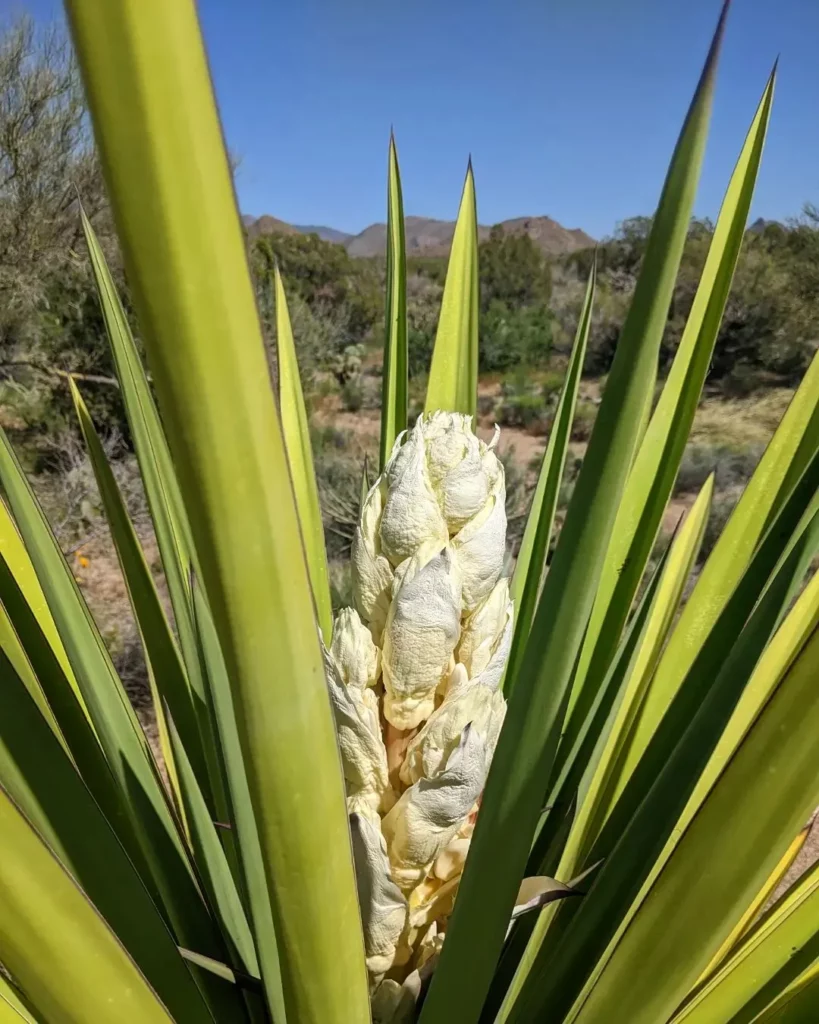
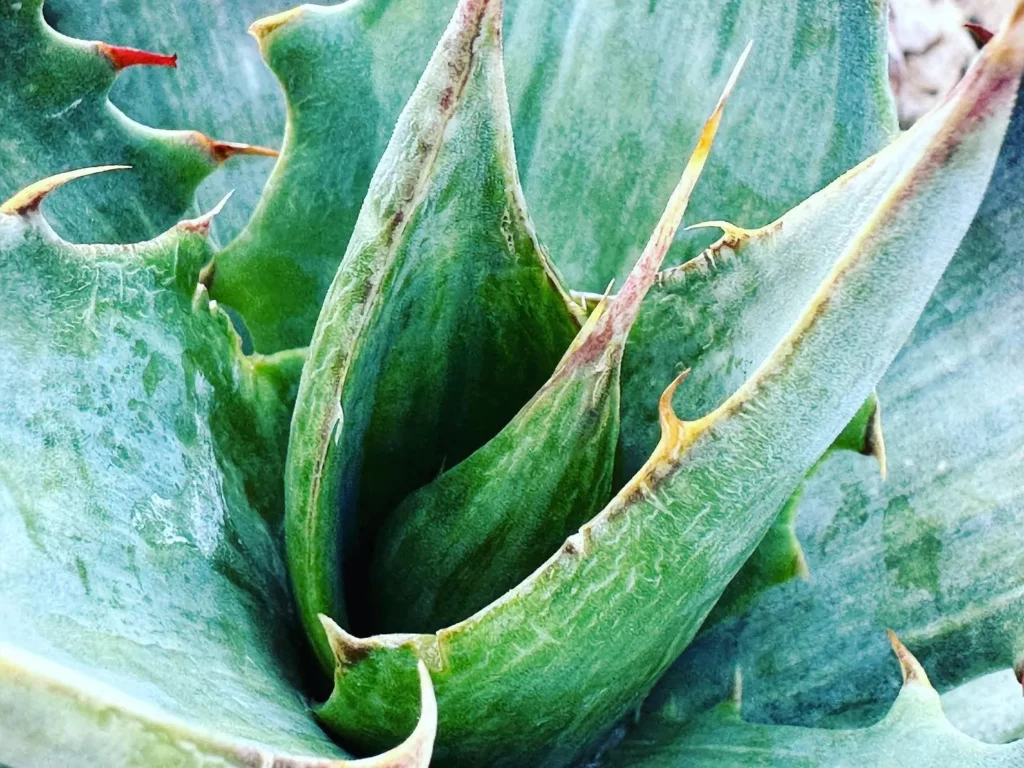
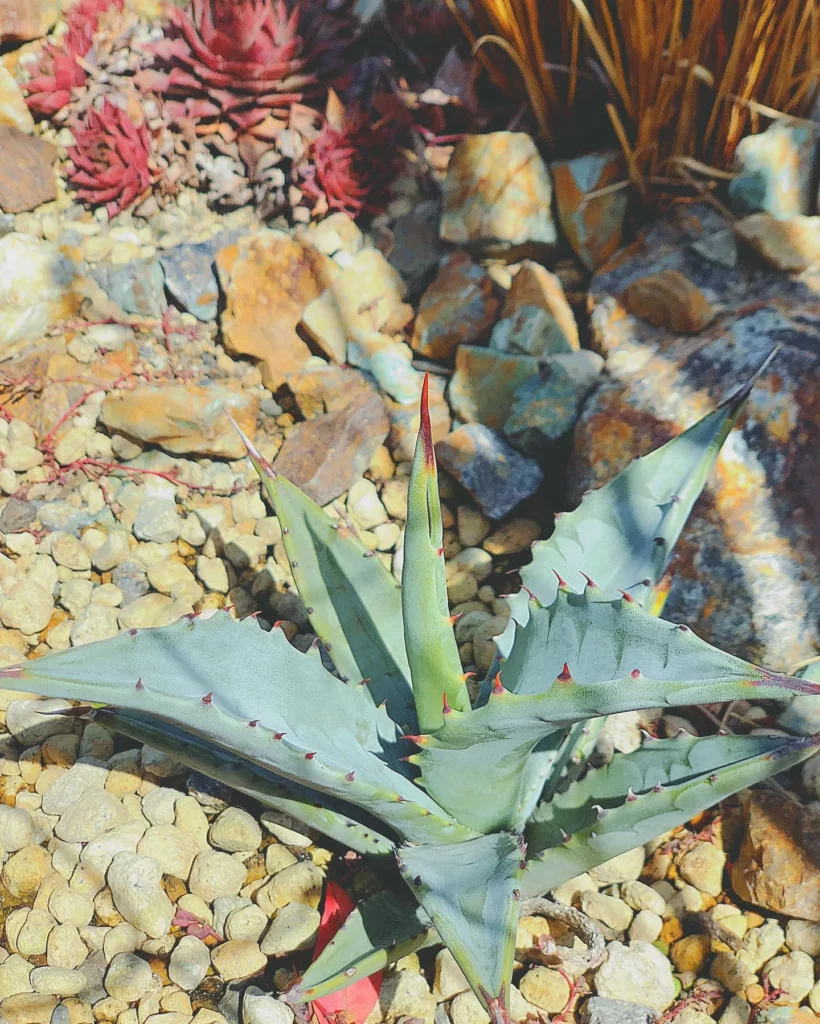
Propagating desert agave plants is a rewarding way to expand your collection and share the beauty of these stunning succulents with others. There are two main methods of propagation: from offsets or pups, and from seeds.
To propagate from offsets, gently dig up the pup that has grown around the base of the parent plant. It’s important to ensure that the pup has some roots still attached. Allow the pup to form a callus for a few days before planting it in a small container with well-draining soil. Place the container in a bright, warm spot and water lightly. After a few weeks, the pup can be transplanted outdoors, where it will continue to grow and thrive.
If you prefer to propagate from seeds, keep in mind that this method requires more patience and time. Start by collecting seeds from a mature agave plant. Sow the seeds in a well-draining soil mix and lightly cover them. Keep the soil consistently moist and provide bright, indirect sunlight. It may take several weeks for the seeds to germinate, and even longer for the plants to reach a suitable size for transplanting.
Propagation Tips:
- Handle the pups with care, as they are delicate and can easily break.
- Allow the pups to callus before planting to reduce the risk of rotting.
- When collecting seeds, choose healthy and mature pods for optimal germination.
- Keep the seedlings in a warm and humid environment to encourage growth.
Growth and Development of Desert Agave
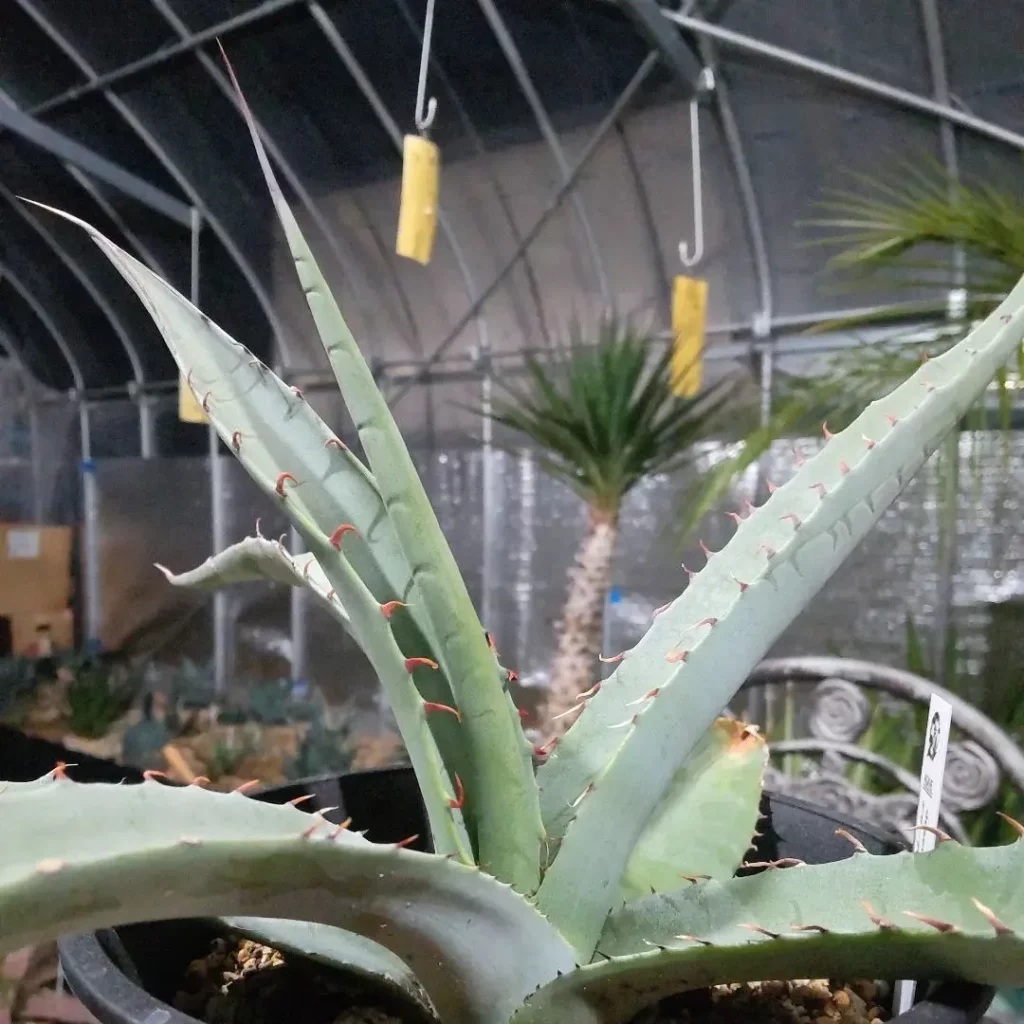
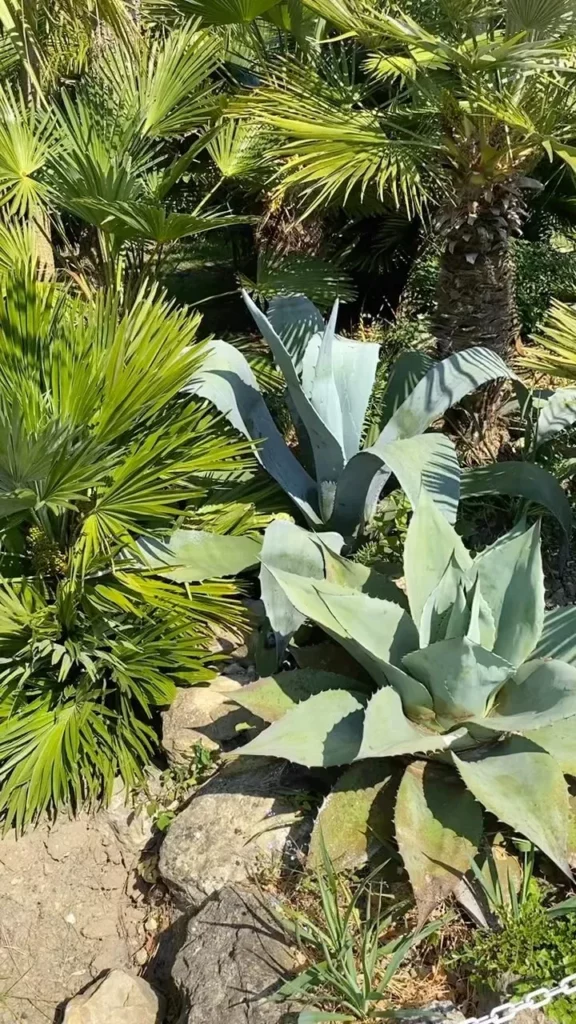
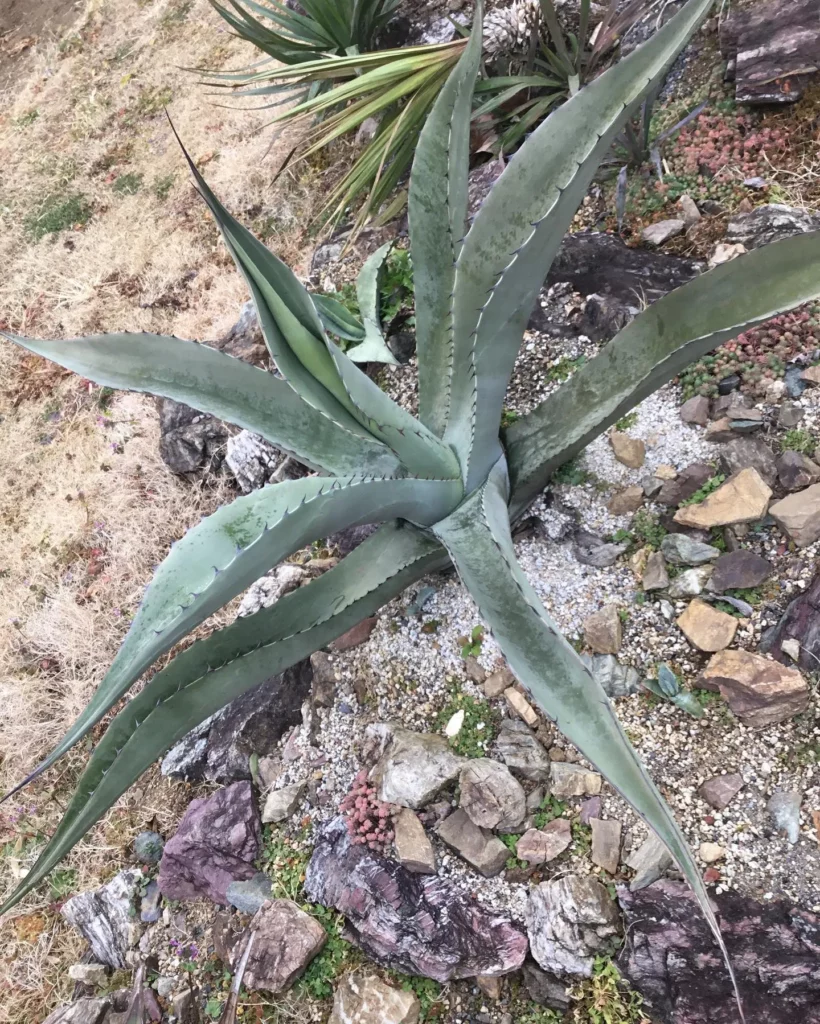
Desert agave plants undergo a fascinating journey of growth and development over their lifespan. It takes approximately 10 to 20 years for these plants to reach maturity. During this time, they form rosettes of thick leaves, which can range in color from grayish-blue to green. The leaves typically grow to be 6 to 15 inches long and 2 to 3 inches wide.
One of the most remarkable aspects of the desert agave’s life cycle is its flowering stage. After reaching maturity, the plant produces a tall flower stalk that can reach impressive heights. This flower stalk is adorned with bright yellow, funnel-shaped blossoms, creating a stunning display. However, it’s important to note that after blooming, the plant dies. But fear not, as the desert agave leaves behind offsets or pups that continue the cycle of growth, ensuring the continuation of this beautiful succulent species.
It’s worth mentioning that desert agave plants have shallow root systems, making them adaptable to growing in shallow containers. They do not require extensive amounts of soil, but they do need well-drained soil to prevent root rot. So, whether you choose to plant them in the ground or in containers, make sure to provide them with the appropriate growing conditions to support their growth and development.
Pests and Diseases of Desert Agave
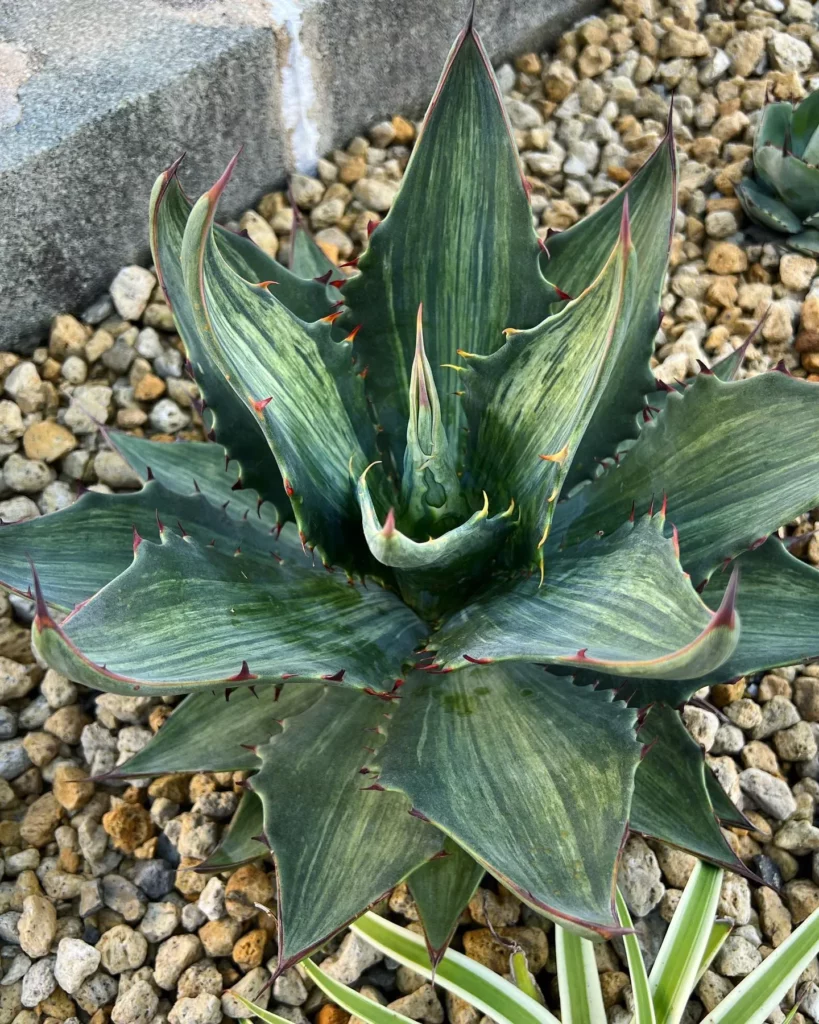
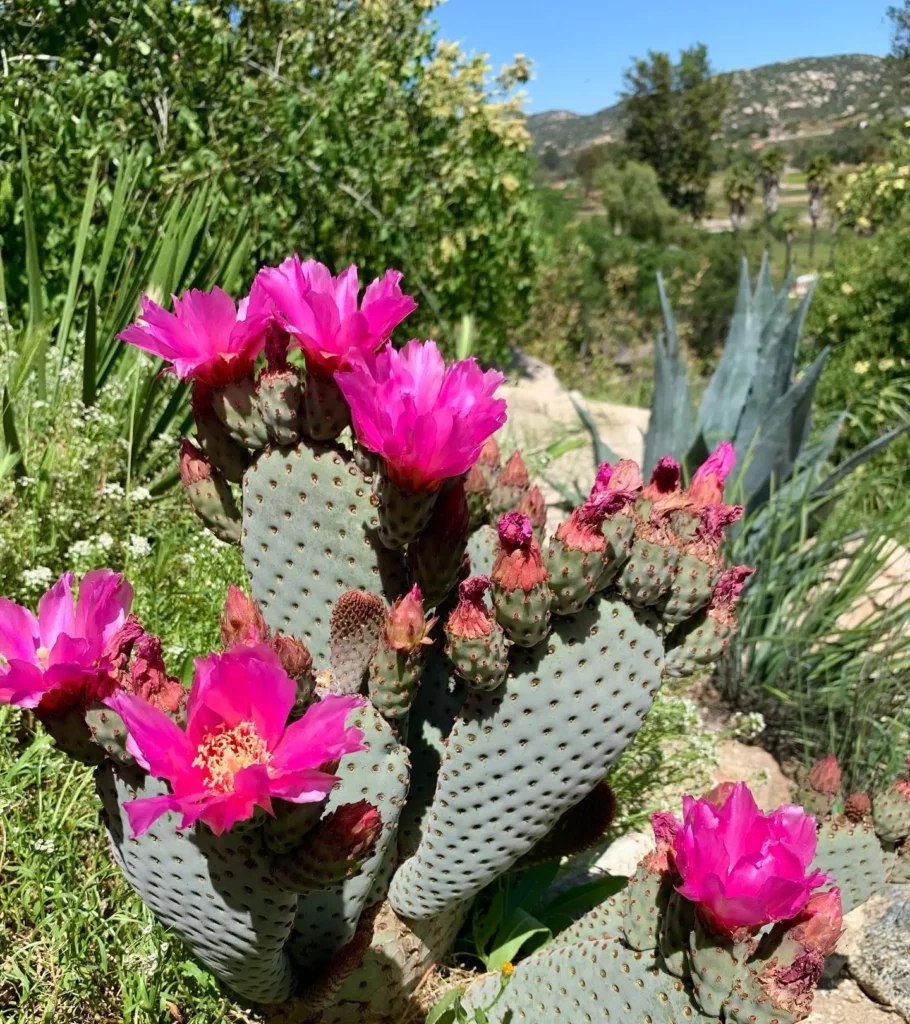
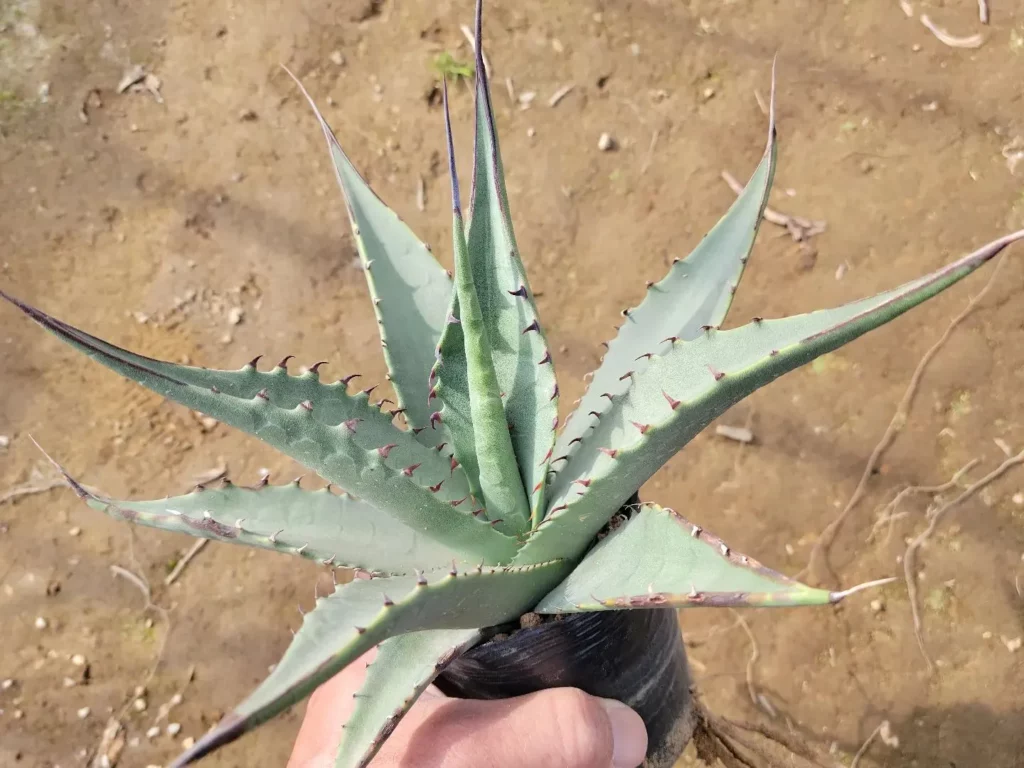
As a desert plant, the agave is naturally resilient and able to withstand various conditions. However, there are a few pests and diseases that can pose a threat to the health of your desert agave plants. Understanding these potential issues can help you take proactive measures to keep your plants thriving. Here are some common pests and diseases to watch out for:
Pests:
- Agave Snout Weevil: This destructive insect burrows into the center of the plant, causing wilting, collapse, and even death. If you notice signs of infestation such as wilting or holes in the leaves, remove and destroy affected plants to prevent the spread of the weevil.
- Mealybugs: These small, white insects can infest the leaves and stems of agave plants, sucking sap and causing damage. If you spot mealybugs, you can remove them manually with a cotton swab dipped in rubbing alcohol or apply insecticidal soap to control the infestation.
- Aphids: These tiny, soft-bodied insects can cluster on the new growth of agave plants, causing stunted growth and distorted leaves. To get rid of aphids, you can spray the affected areas with a strong jet of water or use insecticidal soap.
Diseases:
- Crown Rot: Excessive moisture, particularly in humid conditions, can lead to crown rot in agave plants. This fungal disease causes the plant’s center to rot, leading to wilting and eventual death. To prevent crown rot, make sure the soil is well-draining and avoid overwatering your plants.
- Leaf Spot: Leaf spot is a common fungal disease that causes circular brown spots to appear on the leaves of agave plants. This can occur due to overwatering, poor air circulation, or high humidity. To prevent leaf spot, water the plants at the base and avoid wetting the foliage.
- Root Rot: Overwatering and poorly draining soil can lead to root rot in agave plants. This fungal disease affects the roots, causing them to become mushy and black. To prevent root rot, ensure that the soil is well-draining and allow it to dry out between waterings.
Temperature Requirements for Desert Agave
As a desert plant, the desert agave (Agave spp.) has specific temperature requirements to thrive in its natural habitat. These hardy succulents prefer temperatures ranging from 65-80°F (18-27°C) for optimal growth. They can tolerate higher temperatures up to 95°F (35°C) during the active growing phase and lower temperatures down to 15°F (-10°C) without significant damage.
Factors Affecting Temperature Tolerance
While desert agave plants are well-adapted to hot and arid climates, they can also withstand short periods of freezing temperatures. However, it’s important to note that the temperature tolerance may vary depending on several factors, such as the plant’s overall health, maturity, and its specific species. Young or newly transplanted agave plants may have a lower tolerance for extreme temperatures and may require extra protection during colder months.
Protecting Desert Agave from Temperature Extremes
During extremely cold weather, when temperatures drop below freezing, it is recommended to protect the roots of potted desert agave plants. Wrapping the container with a blanket or bringing it indoors can provide insulation and prevent root damage. In areas with scorching heat, providing partial shade or using shade cloth can help shield the plants from excessive heat and sunburn. Monitoring weather forecasts and taking appropriate actions to protect the plants can ensure their survival and well-being.
Protecting Desert Agave from Temperature Extremes
Desert agave plants are hardy succulents that can tolerate a wide range of temperatures, but they still need some protection from extreme conditions. Here are a few tips to ensure your desert agave thrives and remains healthy even in temperature extremes:
1. Shielding from Winter Cold
During freezing temperatures, it’s crucial to protect the roots of your potted desert agave plants. To do this, wrap the container in a thick blanket or bring it indoors to a sheltered area, such as a heated garage or greenhouse. By insulating the roots, you can prevent them from getting damaged by the cold. If you have planted your agave in the ground, a layer of mulch around the base will help protect the roots as well.
2. Mitigating Heat Stress
High temperatures can cause heat stress in desert agave plants, leading to wilting and leaf browning. To protect your agave from extreme heat, provide some shade during the hottest parts of the day, especially in regions with scorching summers. You can use shading cloth or strategically place the pot in an area with natural shade. Additionally, make sure to water your agave adequately during hot spells to keep the soil moist and the plant hydrated.
3. Monitoring Temperature Fluctuations
Desert agave plants are resilient, but they do have their limits. Keep an eye on temperature fluctuations, especially during transitional seasons like spring and fall. Sudden drops or spikes in temperature can stress the plant and affect its growth. If you notice any changes in the appearance or health of your agave, such as yellowing leaves or stunted growth, take immediate action to protect it from further temperature extremes.
Winter Care for Desert Agave
As the colder months approach, it’s important to provide proper care for your desert agave plants to ensure their survival. Whether you have them planted in the ground or in containers, these simple steps will help protect them during the winter season.
If your desert agave plants are grown outside their hardiness zones, it is advisable to bring them indoors. Find a bright window where they can still receive some sunlight. Be mindful of watering, as the leaves can dry out more slowly during the winter. Water sparingly, allowing the soil to dry out between waterings.
During the hot summer months, your desert agave plants may need extra shade and water. Protect them from the scorching sun by providing some shade during the hottest parts of the day. Water deeply to keep the soil moist, but not saturated.
To safeguard your desert agave plants from freezing temperatures, cover the budding vegetation with frost cloth or use sprinklers to create a protective layer of ice. This helps insulate the plants and prevent frost damage. For potted plants, consider bringing them indoors or wrapping the containers in blankets to protect the roots from the winter cold.
FAQ
What is the appearance of Desert Agave?
Desert Agave plants have thick leaves that end in sharp points. They can range in color from grayish-blue to green and may develop a noticeable band in the center. The size of the leaves typically ranges from 6 to 15 inches long and 2 to 3 inches wide. The plant forms rosettes and produces offsets throughout its lifetime. After 10 to 20 years, it develops a tall flower stalk with bright yellow, funnel-shaped blossoms.
What are the light requirements for Desert Agave?
Desert Agave plants prefer full sun exposure, meaning they need at least six hours of direct sunlight a day. However, they can tolerate some shade, especially in hotter climates. It’s important to note that agave plants do not thrive in high humidity.
How often should I water Desert Agave?
Desert Agave is a drought-tolerant plant that only needs to be watered when the soil is dry. During the establishment phase, water every four to five days for the first month. Afterward, water once a week and gradually decrease watering to every other week, depending on rainfall. It’s crucial to avoid overwatering, as agave plants are susceptible to root rot.
Do Desert Agave plants require fertilizing?
No, Desert Agave plants do not require fertilizing. In fact, fertilizing can encourage premature blooming, which is not ideal as the plant dies after flowering. It’s best to avoid fertilizer and let the plant grow naturally.
How should I pot Desert Agave?
When potting Desert Agave, use a well-draining potting mix made specifically for succulents. Ensure that the container has ample drainage holes to prevent waterlogging. Water the plant about once a week in the summer and monthly in the winter, waiting until the soil is dry a few inches down before watering. Repotting or transplanting may be necessary every few years as the plant grows.
How can I propagate Desert Agave?
Desert Agave plants can be propagated from offsets or pups that grow around the base of the parent plant. To propagate, gently dig up the pup with its roots intact and allow it to form a callus for a few days. Plant the pup in a small container with well-draining soil and place it in a bright, warm spot. Water lightly and transplant it outside after a few weeks. Agaves can also be grown from seeds, but this takes longer to establish new plants.
How long does it take for Desert Agave to reach maturity?
Desert Agave plants take 10 to 20 years to reach maturity. They typically bloom in the spring or summer, producing a tall flower stalk with yellow flowers. After blooming, the plant dies, but it produces offsets that continue the cycle of growth. Desert agaves have shallow root systems and can be grown in shallow containers, though they don’t require much soil.
What pests and diseases are common in Desert Agave?
Desert Agave plants generally have few problems with pests and diseases. However, they can be susceptible to the agave snout weevil, which burrows into the plant’s center and can cause it to collapse. To prevent the spread of pests, remove affected plants. Agaves can also suffer from crown rot if exposed to high humidity, resulting in the death of the plant.
What are the temperature requirements for Desert Agave?
Desert Agave plants thrive in temperatures ranging from 65-80°F (18-27°C). They can tolerate higher temperatures up to 95°F (35°C) during the growing phase and lower temperatures down to 15°F (-10°C). Consistent and cooler temperatures of around 65°F (18°C) promote vigorous growth after germination or transplanting.
How can I protect Desert Agave from temperature extremes?
Desert Agave plants can withstand freezing temperatures when planted in the ground, but their roots should be protected in pots or containers. Wrapping the container in a blanket or bringing it indoors will protect the roots from winter cold. High temperatures can cause heat stress in the plant, leading to wilting, leaf browning, and potentially death.
How should I care for Desert Agave during winter?
During the winter, Desert Agave plants should be brought indoors if they are grown outside their hardiness zones. Place them by a bright window and water sparingly to prevent the leaves from drying out. Provide extra shade and water during hot summer months and cover budding vegetation with frost cloth or use sprinklers to protect from freezing temperatures.

